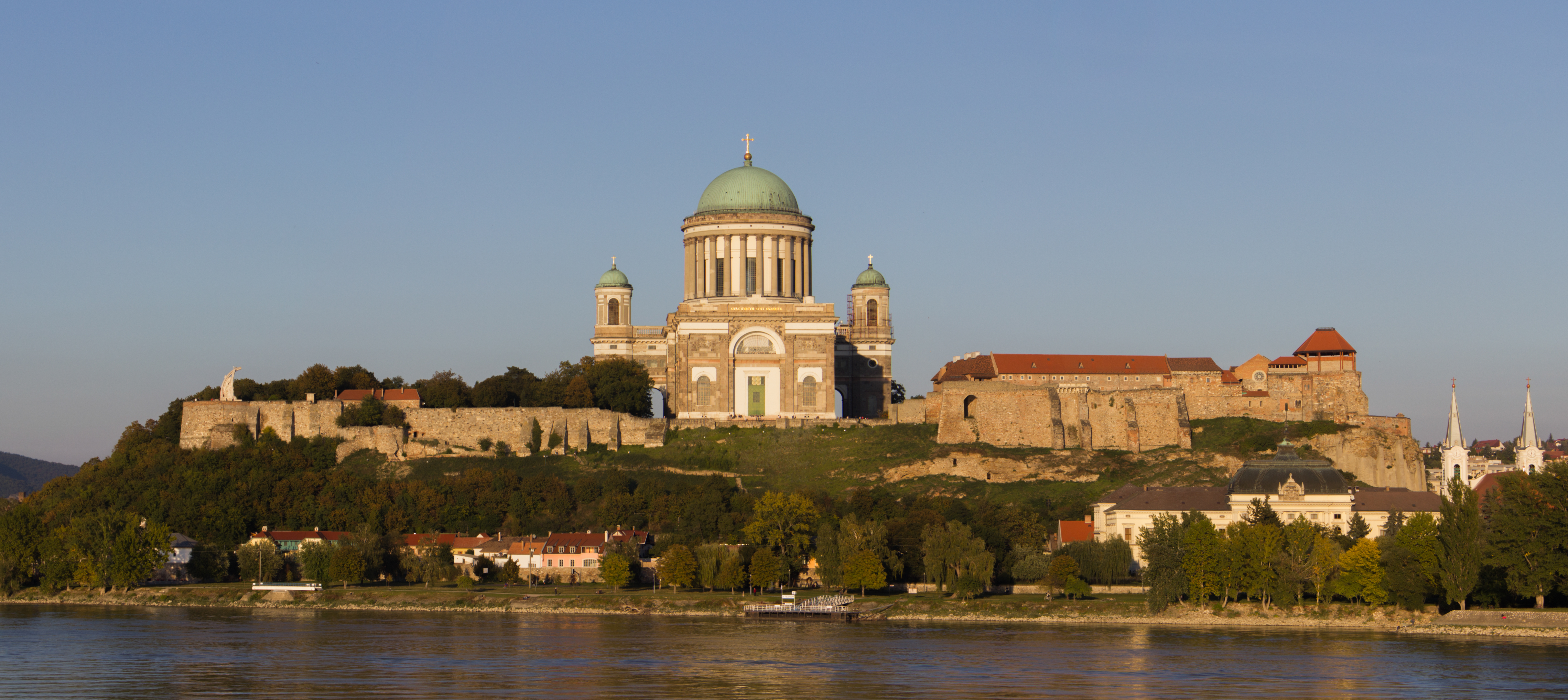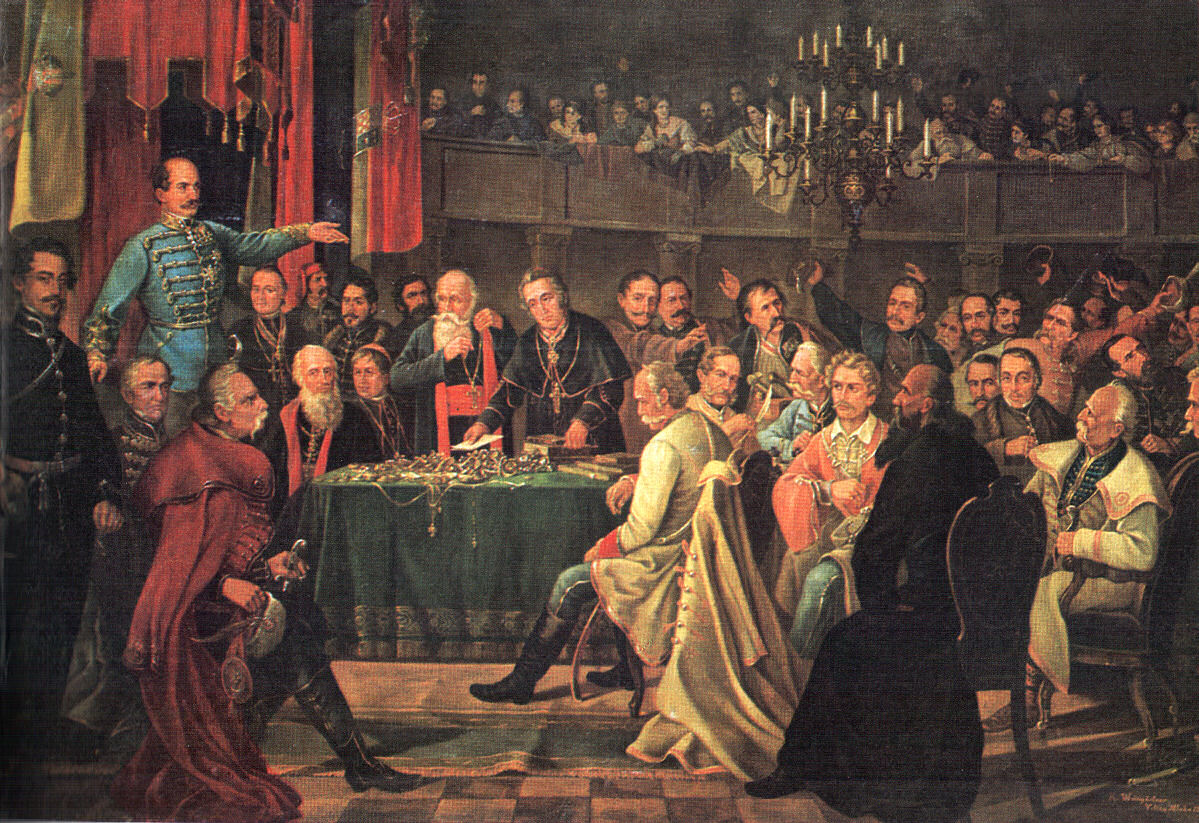|
Juraj Drašković
Juraj II Drašković ( en, George II Drashkovich, hr, Juraj II. Drašković, hu, Draskovics II. György; 5 February 1525 – 31 January 1587) was a Croatian nobleman, statesman and Catholic bishop and cardinal, very powerful and influential in the Croatian Kingdom. He was a member of the Drašković noble family and elected by the Sabor – the Parliament of Croatia – as Ban (viceroy) of Croatia to oversee the country between 1567 and 1578. Early life Juraj Drašković was born at Bilina near Knin (southern Croatia), the eldest son of Bartol /''Bartholomew''/ Drašković (*c.1500; †1538) and his wife Ana née Utješinović, a sister of cardinal Juraj Utješinović /''George Utissenich alias George Martinuzzi''/ (*1482; †1551), bishop of Oradea and archbishop of Esztergom. Having lived in turbulent and dangerous times of Ottoman invasion, Bartol's family moved from southern Croatia to Karlovac region in the west part of the country. During Juraj's childhood, his father ... [...More Info...] [...Related Items...] OR: [Wikipedia] [Google] [Baidu] |
Cardinal (Catholicism)
A cardinal ( la, Sanctae Romanae Ecclesiae cardinalis, literally 'cardinal of the Holy Roman Church') is a senior member of the clergy of the Catholic Church. Cardinals are created by the ruling pope and typically hold the title for life. Collectively, they constitute the College of Cardinals. Their most solemn responsibility is to elect a new pope in a conclave, almost always from among themselves (with a few historical exceptions), when the Holy See is vacant. During the period between a pope's death or resignation and the election of his successor, the day-to-day governance of the Holy See is in the hands of the College of Cardinals. The right to participate in a conclave is limited to cardinals who have not reached the age of 80 years by the day the vacancy occurs. In addition, cardinals collectively participate in papal consistories (which generally take place annually), in which matters of importance to the Church are considered and new cardinals may be created. Cardin ... [...More Info...] [...Related Items...] OR: [Wikipedia] [Google] [Baidu] |
Zagreb
Zagreb ( , , , ) is the capital and largest city of Croatia. It is in the northwest of the country, along the Sava river, at the southern slopes of the Medvednica mountain. Zagreb stands near the international border between Croatia and Slovenia at an elevation of approximately above sea level. At the 2021 census, the city had a population of 767,131. The population of the Zagreb urban agglomeration is 1,071,150, approximately a quarter of the total population of Croatia. Zagreb is a city with a rich history dating from Roman times. The oldest settlement in the vicinity of the city was the Roman Andautonia, in today's Ščitarjevo. The historical record of the name "Zagreb" dates from 1134, in reference to the foundation of the settlement at Kaptol in 1094. Zagreb became a free royal city in 1242. In 1851 Janko Kamauf became Zagreb's first mayor. Zagreb has special status as a Croatian administrative division - it comprises a consolidated city-county (but separate f ... [...More Info...] [...Related Items...] OR: [Wikipedia] [Google] [Baidu] |
Padova
Padua ( ; it, Padova ; vec, Pàdova) is a city and ''comune'' in Veneto, northern Italy. Padua is on the river Bacchiglione, west of Venice. It is the capital of the province of Padua. It is also the economic and communications hub of the area. Padua's population is 214,000 (). The city is sometimes included, with Venice (Italian ''Venezia'') and Treviso, in the Padua-Treviso-Venice Metropolitan Area (PATREVE) which has a population of around 2,600,000. Padua stands on the Bacchiglione River, west of Venice and southeast of Vicenza. The Brenta River, which once ran through the city, still touches the northern districts. Its agricultural setting is the Venetian Plain (''Pianura Veneta''). To the city's south west lies the Euganaean Hills, praised by Lucan and Martial, Petrarch, Ugo Foscolo, and Shelley. Padua appears twice in the UNESCO World Heritage List: for its Botanical Garden, the most ancient of the world, and the 14th-century Frescoes, situated in different bu ... [...More Info...] [...Related Items...] OR: [Wikipedia] [Google] [Baidu] |
Karlovac
Karlovac () is a city in central Croatia. According to the 2011 census, its population was 55,705. Karlovac is the administrative centre of Karlovac County. The city is located on the Zagreb- Rijeka highway and railway line, south-west of Zagreb and from Rijeka. Name The city was named after its founder, Charles II, Archduke of Austria. The German name ''Karlstadt'' or ''Carlstadt'' ("Charlestown") has undergone translation into other languages: in Hungarian it is known as ''Károlyváros'', in Italian as ''Carlovizza'', in Latin as ''Carolostadium'', and in Kajkavian and Slovene as Karlovec. History The Austrians built Karlovac from scratch in 1579 in order to strengthen their southern defences against Ottoman encroachments. The establishment of a new city-fortress was a part of the deal between the Protestant nobility of Inner Austria and the archduke Charles II of Austria. In exchange for their religious freedom the nobility agreed to finance the building of a ne ... [...More Info...] [...Related Items...] OR: [Wikipedia] [Google] [Baidu] |
Esztergom
Esztergom ( ; german: Gran; la, Solva or ; sk, Ostrihom, known by alternative names) is a city with county rights in northern Hungary, northwest of the capital Budapest. It lies in Komárom-Esztergom County, on the right bank of the river Danube, which forms the border with Slovakia there. Esztergom was the capital of Hungary from the 10th until the mid-13th century when King Béla IV of Hungary moved the royal seat to Buda. Esztergom is the seat of the ''prímás'' (see Primate) of the Roman Catholic Church in Hungary, and the former seat of the Constitutional Court of Hungary. The city has a Christian Museum with the largest ecclesiastical collection in Hungary. Its cathedral, Esztergom Basilica, is the largest church in Hungary. Toponym The Roman town was called ''Solva''. The medieval Latin name was ''Strigonium''. The first early medieval mention is "''ſtrigonensis trigonensiscomes''" (1079-1080). The first interpretation of the name was suggested by A ... [...More Info...] [...Related Items...] OR: [Wikipedia] [Google] [Baidu] |
Oradea
Oradea (, , ; german: Großwardein ; hu, Nagyvárad ) is a city in Romania, located in Crișana, a sub-region of Transylvania. The seat of Bihor County, Oradea is one of the most important economic, social and cultural centers in the western part of Romania. The city is located in the north-west of the country, nestled between hills on the Crișana plain, on the banks of the river Crișul Repede, that divides the city into almost equal halves. Located about from Borș, one of the most important crossing points on Romania's border with Hungary, Oradea ranks tenth in size among Romanian cities. It covers an area of , in an area of contact between the extensions of the Apuseni Mountains and the Crișana-Banat extended plain. Oradea enjoys a high standard of living and ranks among the most livable cities in the country. The city is also a strong industrial center in the region, hosting some of Romania's largest companies. Besides its status as an economic hub, Oradea boasts a ... [...More Info...] [...Related Items...] OR: [Wikipedia] [Google] [Baidu] |
George Martinuzzi
George Martinuzzi, O.S.P. (born Juraj Utješenović, also known as György Martinuzzi, Brother György, Georg Utiessenovicz-Martinuzzi or György Fráter, hu, Fráter György; 1482 – 16 December 1551), was a Croatian nobleman, Pauline monk and Hungarian statesman who supported King John Zápolya and his son, King John Sigismund Zápolya. He was Bishop of Nagyvárad (now Oradea), Archbishop of Esztergom and a cardinal. Name Since he usually identified himself as ''"Frater Georgius"'', he is known in Hungarian history as ''"Fráter György"''. Early years Most details of Martinuzzi's life before 1528 are uncertain. He was the youngest son of a Croatian lesser nobleman, Grgur Utješenović, and Anna Martinuzzi, who was descended from a Venetian patrician family. He was born in Kamičak Castle, near Skradin, on 18 June 1482. On the father's side, he is originating from a Hungarian noble family (Fráter from Dobra genus). His grandfather was András Mátyok-Kézi. He was ... [...More Info...] [...Related Items...] OR: [Wikipedia] [Google] [Baidu] |
Croatia
, image_flag = Flag of Croatia.svg , image_coat = Coat of arms of Croatia.svg , anthem = "Lijepa naša domovino"("Our Beautiful Homeland") , image_map = , map_caption = , capital = Zagreb , coordinates = , largest_city = capital , official_languages = Croatian language, Croatian , languages_type = Writing system , languages = Latin alphabet, Latin , ethnic_groups = , ethnic_groups_year = 2021 , religion = , religion_year = 2021 , demonym = , government_type = Unitary parliamentary republic , leader_title1 = President of Croatia, President , leader_name1 = Zoran Milanović , leader_title2 = Prime Minister of Croatia, Prime Minister , leader_name2 = Andrej Plenković , leader_title3 = Speaker of the Croatian Parliament, Speaker of P ... [...More Info...] [...Related Items...] OR: [Wikipedia] [Google] [Baidu] |
Sabor
The Croatian Parliament ( hr, Hrvatski sabor) or the Sabor is the unicameral legislature of the Republic of Croatia. Under the terms of the Croatian Constitution, the Sabor represents the people and is vested with legislative power. The Sabor is composed of 151 members elected to a four-year term on the basis of direct, universal and equal suffrage by secret ballot. Seats are allocated according to the Croatian Parliament electoral districts: 140 members of the parliament are elected in multi-seat constituencies. An additional three seats are reserved for the diaspora and Croats in Bosnia and Herzegovina, while national minorities have eight places reserved in parliament. The Sabor is presided over by a Speaker, who is assisted by at least one deputy speaker (usually four or five deputies). The Sabor's powers are defined by the Constitution and they include: defining economic, legal and political relations in Croatia, preservation and use of its heritage and entering int ... [...More Info...] [...Related Items...] OR: [Wikipedia] [Google] [Baidu] |
House Of Drašković
A house is a single-unit residential building. It may range in complexity from a rudimentary hut to a complex structure of wood, masonry, concrete or other material, outfitted with plumbing, electrical, and heating, ventilation, and air conditioning systems.Schoenauer, Norbert (2000). ''6,000 Years of Housing'' (rev. ed.) (New York: W.W. Norton & Company). Houses use a range of different roofing systems to keep precipitation such as rain from getting into the dwelling space. Houses may have doors or locks to secure the dwelling space and protect its inhabitants and contents from burglars or other trespassers. Most conventional modern houses in Western cultures will contain one or more bedrooms and bathrooms, a kitchen or cooking area, and a living room. A house may have a separate dining room, or the eating area may be integrated into another room. Some large houses in North America have a recreation room. In traditional agriculture-oriented societies, domestic animals such as ... [...More Info...] [...Related Items...] OR: [Wikipedia] [Google] [Baidu] |
Croats
The Croats (; hr, Hrvati ) are a South Slavic ethnic group who share a common Croatian ancestry, culture, history and language. They are also a recognized minority in a number of neighboring countries, namely Austria, the Czech Republic, Germany, Hungary, Italy, Montenegro, Romania, Serbia, Slovakia and Slovenia. Due to political, social and economic reasons, many Croats migrated to North and South America as well as New Zealand and later Australia, establishing a diaspora in the aftermath of World War II, with grassroots assistance from earlier communities and the Roman Catholic Church. In Croatia (the nation state), 3.9 million people identify themselves as Croats, and constitute about 90.4% of the population. Another 553,000 live in Bosnia and Herzegovina, where they are one of the three constituent ethnic groups, predominantly living in Western Herzegovina, Central Bosnia and Bosnian Posavina. The minority in Serbia number about 70,000, mostly in Voj ... [...More Info...] [...Related Items...] OR: [Wikipedia] [Google] [Baidu] |






.png)